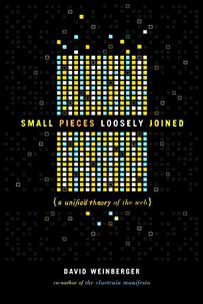AI is guest-writing my blog today
Prompt to Claude:
write a 500-700 w ord blog post about something you know that is not directly referenced in your training materials. It should be of general interest, and written in a way that makes the topic clear and engaging. Assume an intelligent but non-specialist reader.
Response:
The Curious Case of Nautical Twilight:
The Navigator’s Golden Hour
There’s a moment, just before sunrise or after sunset, when the world lingers between day and night. Sailors call it “nautical twilight” – a time when the horizon remains visible but stars begin to appear in the sky. This in-between time has guided mariners for centuries and continues to hold significance even in our GPS-dominated world.
What Exactly Is Nautical Twilight?
Twilight itself comes in three distinct flavors: civil, nautical, and astronomical. Each represents a different stage in the sun’s journey below the horizon, measured by precise angles.
Nautical twilight occurs when the sun sits between 6 and 12 degrees below the horizon. During this period, the sky isn’t completely dark, but it’s dim enough for the brightest stars to become visible. Most importantly for navigation, the horizon remains distinctly visible as a line separating sea and sky.
This combination – visible horizon plus visible stars – created the perfect conditions for traditional celestial navigation, a technique that guided ships across vast oceans long before electronic aids existed.
The Navigator’s Perfect Moment
Before modern instruments, sailors determined their position using sextants to measure the angle between celestial bodies and the horizon. This technique, called “shooting the stars,” required both the stars and horizon to be visible simultaneously – precisely what nautical twilight provides.
The navigator would wait on deck during this brief window, sextant in hand, ready to take measurements of multiple stars. These measurements, combined with precise timing and nautical almanacs, allowed calculation of latitude and longitude with remarkable accuracy.
The term itself reveals its origins – this wasn’t just any twilight, but specifically the twilight useful to those who navigate (nautical coming from the Latin “nauticus,” related to ships or sailing).
Beyond Navigation
Nautical twilight affects more than just navigation. Marine ecosystems undergo significant changes during this period. Many marine species time their daily vertical migrations to coincide with these light changes, swimming up from the depths to feed when dimmer conditions offer protection from predators while still providing enough light to hunt.
Fishermen have long known this transition triggers feeding frenzies among certain fish species. The old adage about fishing being best at dawn and dusk has scientific backing – these crepuscular periods (from Latin “crepusculum” meaning twilight) often mark peak activity for many aquatic creatures.
Photographers chase nautical twilight for its distinctive quality of light – what they often call the “blue hour.” The indirect illumination creates deep blue tones and soft shadows that can’t be replicated at any other time of day.
Nautical Twilight in the Modern World
While GPS has largely replaced celestial navigation for practical purposes, nautical twilight remains relevant. Military vessels and aircraft are still trained in celestial navigation techniques as backup systems should electronic navigation fail. Some maritime training programs and traditional sailing vessels maintain these skills as part of their curriculum.
The U.S. Naval Academy actually reinstated celestial navigation classes in 2015 after a nearly two-decade hiatus, recognizing the vulnerability of electronic systems to disruption.
Experiencing Nautical Twilight
You don’t need to be a sailor to appreciate nautical twilight. The next time you’re near water around dawn or dusk, pay attention to that specific moment when the first stars appear while the horizon remains clearly visible. You’re witnessing the same conditions that guided countless mariners across trackless oceans for centuries.
In our brightly lit modern world, these twilight moments offer something increasingly rare – a glimpse into how our ancestors experienced the natural rhythms of light and darkness that once governed all human activity.
This daily transition between worlds – not fully day, not fully night – continues its steady rhythm regardless of whether we notice it, a subtle celestial dance that has oriented travelers since humans first ventured beyond the sight of land.
I then asked Claude to fact check what it just wrote. Results here.









